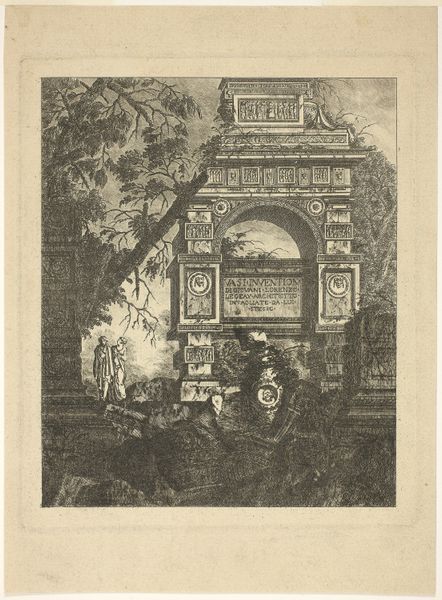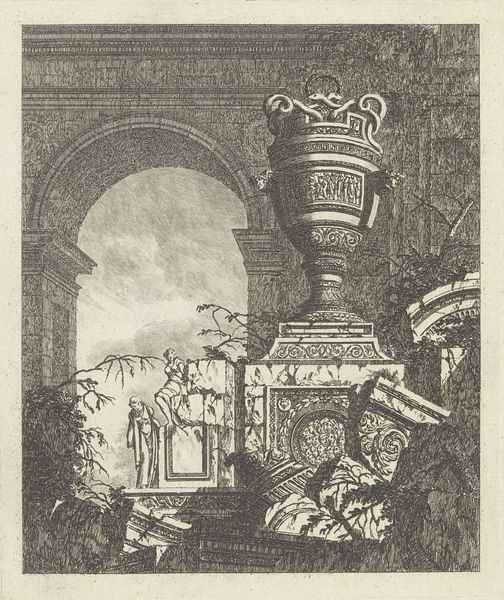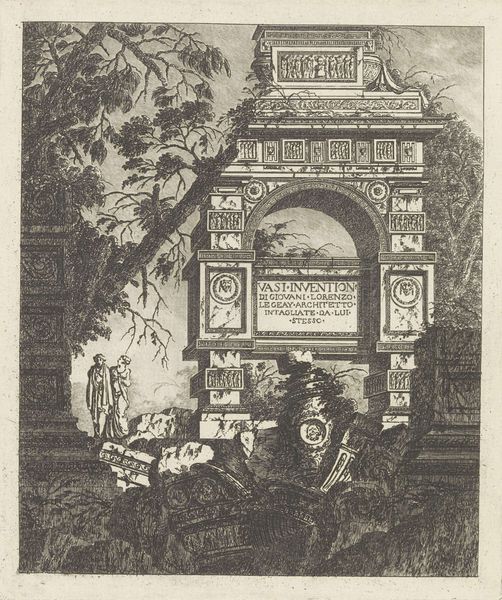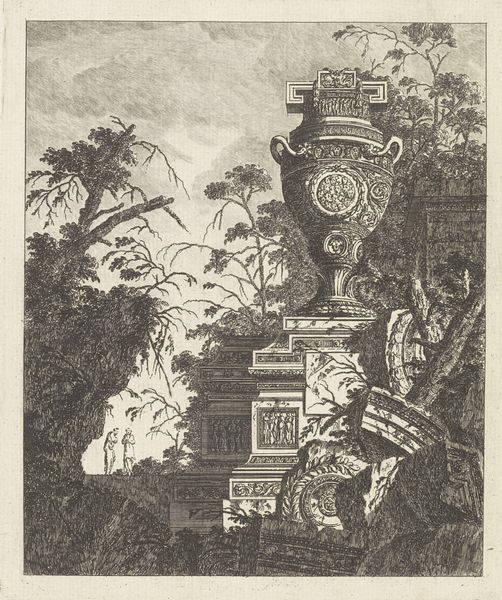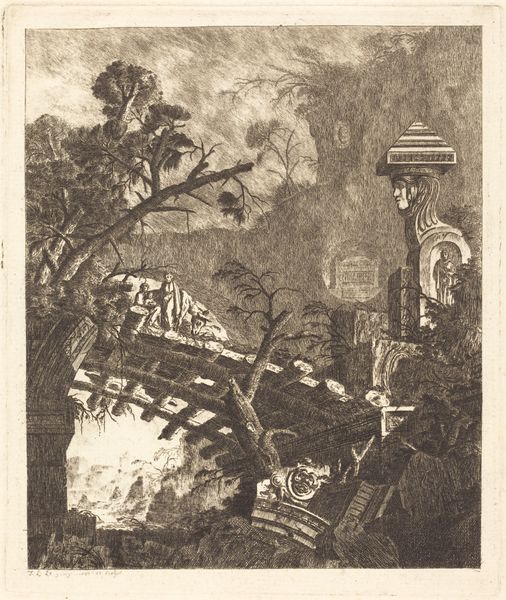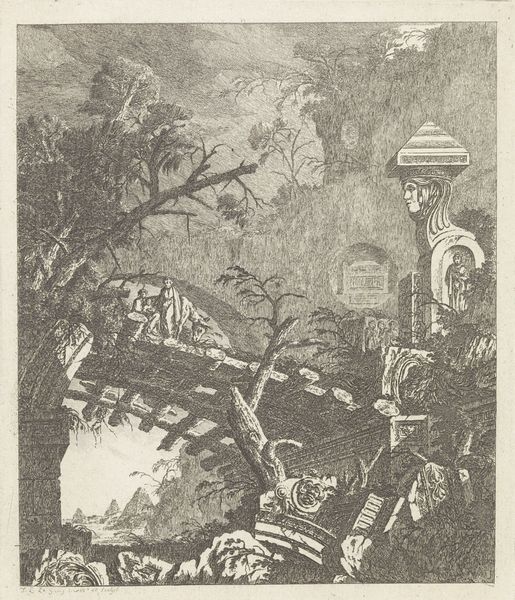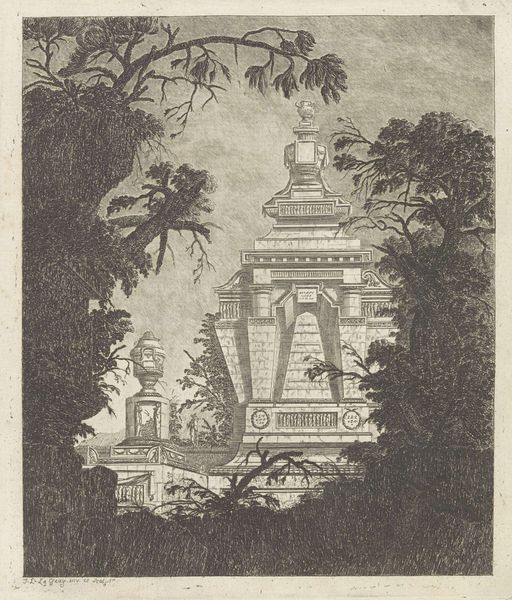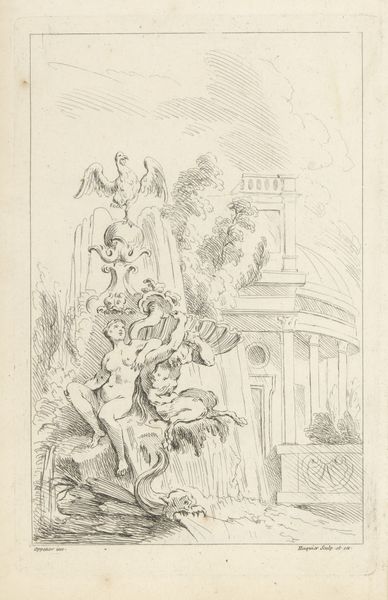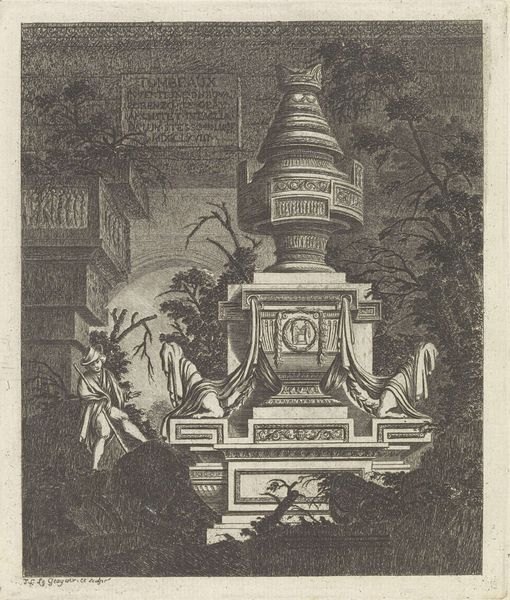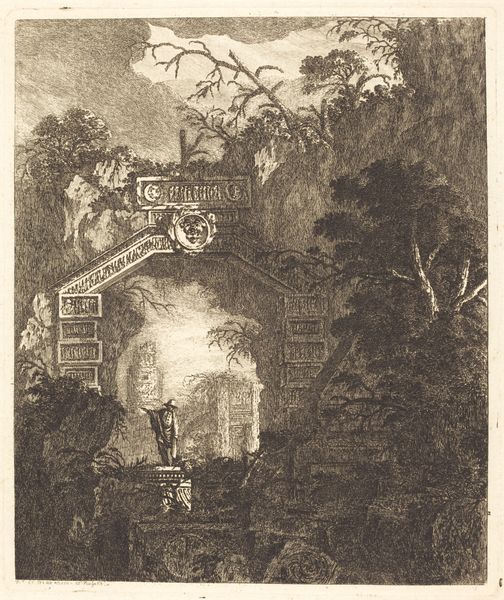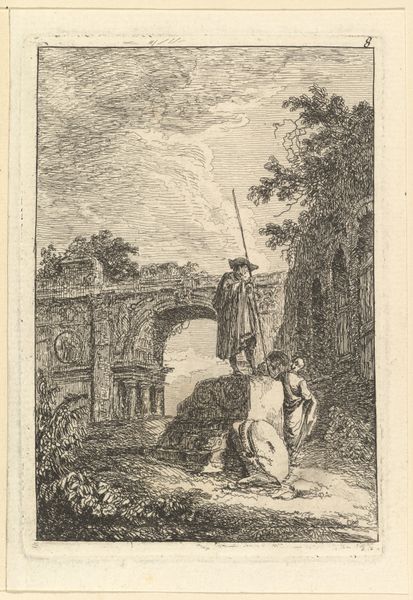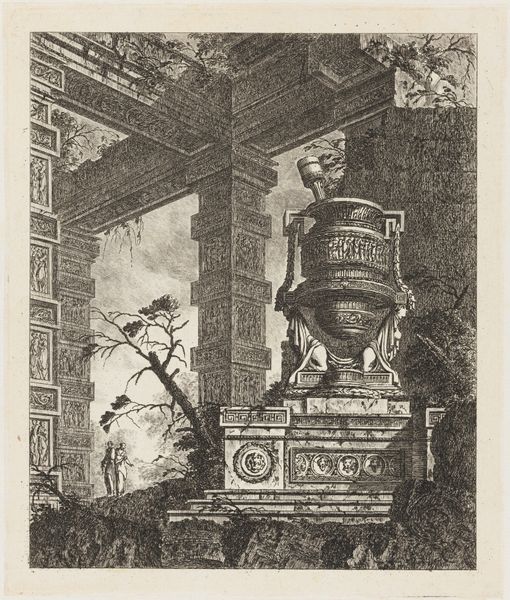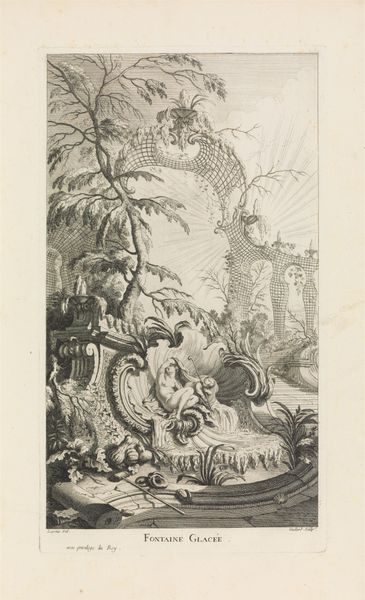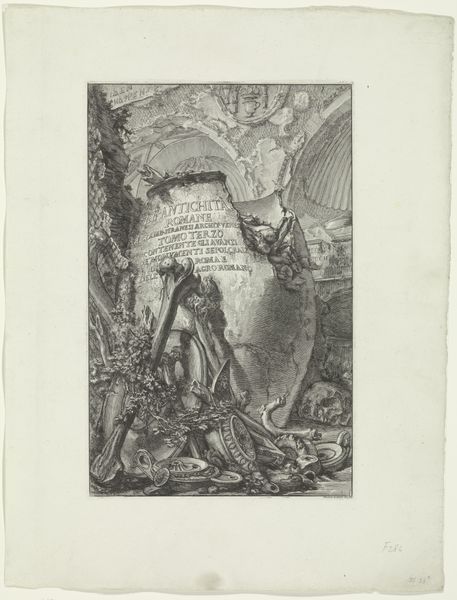
engraving
#
neoclacissism
#
landscape
#
history-painting
#
engraving
Dimensions: height 195 mm, width 165 mm
Copyright: Rijks Museum: Open Domain
Curator: This engraving, dating from around 1767-1770, is entitled "Landschap met ruïnes en andere antieke overblijfselen", or "Landscape with Ruins and Other Antique Remains." It comes to us from the hand of Jean Laurent Legeay. What's your immediate take? Editor: An uncanny stillness hangs in the air, like a theater set just before the actors appear. It's all these decaying architectural elements, you know? Hints of grandeur now overgrown with foliage, nature reclaiming civilization. The solitary figure adds to this contemplative mood. Curator: Exactly! Ruins are powerful symbols of transience and mortality. They prompt reflection on the rise and fall of civilizations, on the enduring power of nature versus the fleeting nature of human achievements. And this falls perfectly into the Neoclassical obsession with the antique past. Editor: That's so true. It's more than just romantic nostalgia, though. It's like Legeay is trying to extract lessons from the past, holding up these classical forms as examples of a more rational, ordered world, even in their fragmented state. Almost as if their past splendor still teaches lessons. Curator: I agree. The clarity and precision of the engraved lines also reinforce this idea of order, even amidst the ruins. But I find the man depicted puzzling; what are your thoughts about his symbolic implications? Editor: It almost feels like an artist’s sketch, capturing the scene. Is he documenting these ruins, or perhaps even imagining the restoration of these former glories? There is also something so incredibly unsettling about that face at the foot of his rock! Curator: An interesting observation! Such grimacing mascarons can indeed be seen on certain decorative fixtures even today. Well, in essence, the inclusion of this ominous carving really adds layers of contrast; these figures serve as potent symbols, inviting multiple interpretations, echoing classical themes of time, memory, and the relationship between humanity and nature. Editor: So well said! Thinking about this print has felt like discovering hidden connections across time, appreciating beauty even within inevitable decay, and understanding our human footprint on it all. Curator: For me as well. A journey through art history is truly a quest through symbols.
Comments
No comments
Be the first to comment and join the conversation on the ultimate creative platform.
